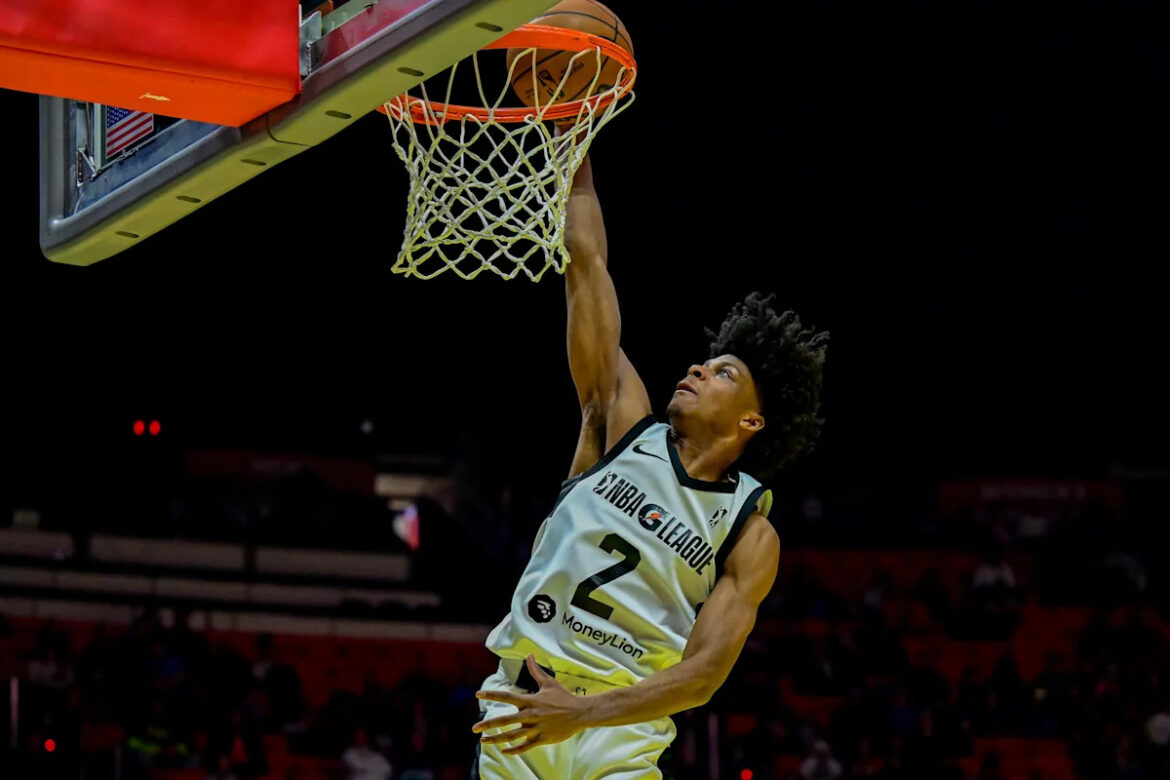Louisville basketball’s latest commitment London Johnson unwittingly became the poster child for all the angst and anger college basketball coaches have had with the ever-changing landscape that has characterized the past four years in the sport.
There are coaches who are big mad.
Advertisement
And their frustration isn’t directed at Johnson for trying to put himself in a better position to develop as a player and make the NBA. It isn’t aimed at Louisville coach Pat Kelsey and he’s not all of a sudden being viewed as a rogue coach who believes the rules don’t apply to him.
The problem is the only rule seems to be that there are no rules.
Coaches are exasperated because just as they feel like they have a sense of where the boundaries are, they get informed that they’ve changed again. Nothing drives home that point more than the fact that Johnson’s commitment wasn’t the first from a former NBA G League player.
Thierry Darlan committed to Santa Clara last month after playing the past two seasons in the G League. His eligibility went largely unnoticed. It took Johnson’s announcement to a high-profile program like Louisville for people to pay attention.
Advertisement
Kansas coach Bill Self said “it’s a ridiculous world we live in” in relation to how the NCAA has gone about approving changes in eligibility rules.
“Now they almost want us, even though they’re legal, to police ourself and say, ‘Well, this isn’t the right thing to do,’ so don’t do it when it’s perfectly, perfectly legal,” Self said.
Coaches are exhausted and Johnson’s commitment just might be their tipping point.
The 21-year-old Johnson, who was a top guard in the Class of 2022, chose to play with the G League Ignite program out of high school, which was the developmental program for elite prospects. The team played games against G League teams.
Advertisement
Part of the appeal of joining Ignite over attending college, before name, image and likeness, was it also paid a salary. The average G League player makes $40,000 a year.
Johnson averaged 3.1 points, 1.3 rebounds and 1.7 assists in a combined 21 games for the Maine Celtics and Cleveland Charge last season. His salary isn’t public knowledge, but if he made more than what the NCAA deemed necessary expenses in the G League, he’d have to pay it back.
He was NBA draft eligible last June.
The truth is, if Johnson was actually from London and began his career playing professionally with a European club team, no one would have blinked twice about it.
Advertisement
“It’s the same exact thing,” Kelsey said. “I don’t think there’s any difference. (There are a) ton of schools that are signing players that were professional players and signed professional contracts in professional basketball leagues all around the country. What’s the difference?”
If Kentucky’s recruitment of Enes Kanter, who later adapted the last name Freedom, happened in today’s NCAA, he would have been cleared to play. At the time former UK coach John Calipari recruited him, Kanter had played for the professional club Fenerbahce.
Coaches have been clamoring for the NCAA to establish some hard lines. There currently appear to be no guardrails in place because they’re always under renovation.
Michigan State coach Tom Izzo had an interview go viral on social media where, while he deliberately did not criticize Johnson or Kelsey, he absolutely pounced on the idea of allowing former NBA G League players in college basketball.
Advertisement
Izzo appealed for the NCAA to “fight the fight” instead of kowtowing to the lawsuits that have reduced the backbone of the organization’s rule enforcement to constituency of gummy bears.
It’s time the NCAA stop playing musical chairs with eligibility and establish where everyone has a seat.
Reach sports columnist C.L. Brown at clbrown1@gannett.com, follow him on X at @CLBrownHoops and subscribe to his newsletter at profile.courier-journal.com/newsletters/cl-browns-latest to make sure you never miss one of his columns.
This article originally appeared on Louisville Courier Journal: London Johnson Louisville basketball pledge tipping point for change?
